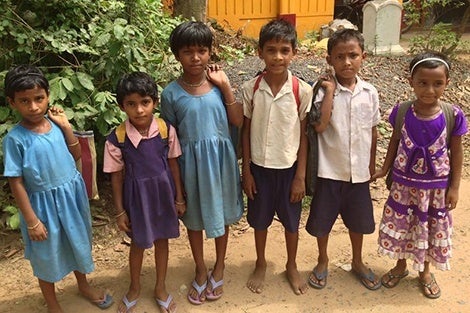July 12, 2017 – There are substantial inequalities in childhood undernutrition in developing countries driven by differing wealth and education levels in children’s households, and these inequalities have persisted or even increased over the past 25 years, according to a large new study led by Harvard T.H. Chan School of Public Health researchers.
The study, published July 11, 2017 in BMJ Global Health, is the most comprehensive analysis to date revealing the wide gaps in childhood undernutrition at the global level.
“Such persistent inequality in childhood undernutrition is reason for serious concern and indicates that parts of the population are being left out of societal progress,” said lead author Sebastian Vollmer, adjunct professor in Harvard Chan School’s Department of Global Health and Population. S V Subramanian, professor of population health and geography at Harvard Chan, was the study’s senior author.
Undernutrition leads to the premature death of millions of children in developing countries, and renders millions more vulnerable to infection and disease. Previous studies that have examined the impact of socioeconomic inequality on childhood undernutrition have focused on single indicators—stunting, wasting, or underweight. Looked at individually, these indicators are unable to provide a comprehensive estimate of the proportion of undernourished children in the population, the authors said.
For the new study, the authors used an alternative measure of undernutrition, called the Composite Index of Anthropometric Failure (CIAF), that takes into account all three undernutrition indicators together. Using data from more than 533,000 children in 39 low-income and lower-middle-countries, the researchers compared undernutrition prevalence in 1990-2000 with its prevalence in 2001-2014.
While the overall prevalence of undernutrition decreased over time, from 47.5% to 42.6%, there were very large and persistent gaps between the richest and poorest households in developing countries (a roughly 21-percentage-point difference in prevalence) and between uneducated households and those with secondary education (a 27-31-percentage-point difference), the researchers found.
Given the pronounced gaps in childhood undernutrition, the authors called for efforts to identify the most marginalized communities in developing countries and to overcome barriers that prevent poor children and their families from getting access to the nutrition they need.
photo: © 2014 Lindsey Leslie, Courtesy of Photoshare
